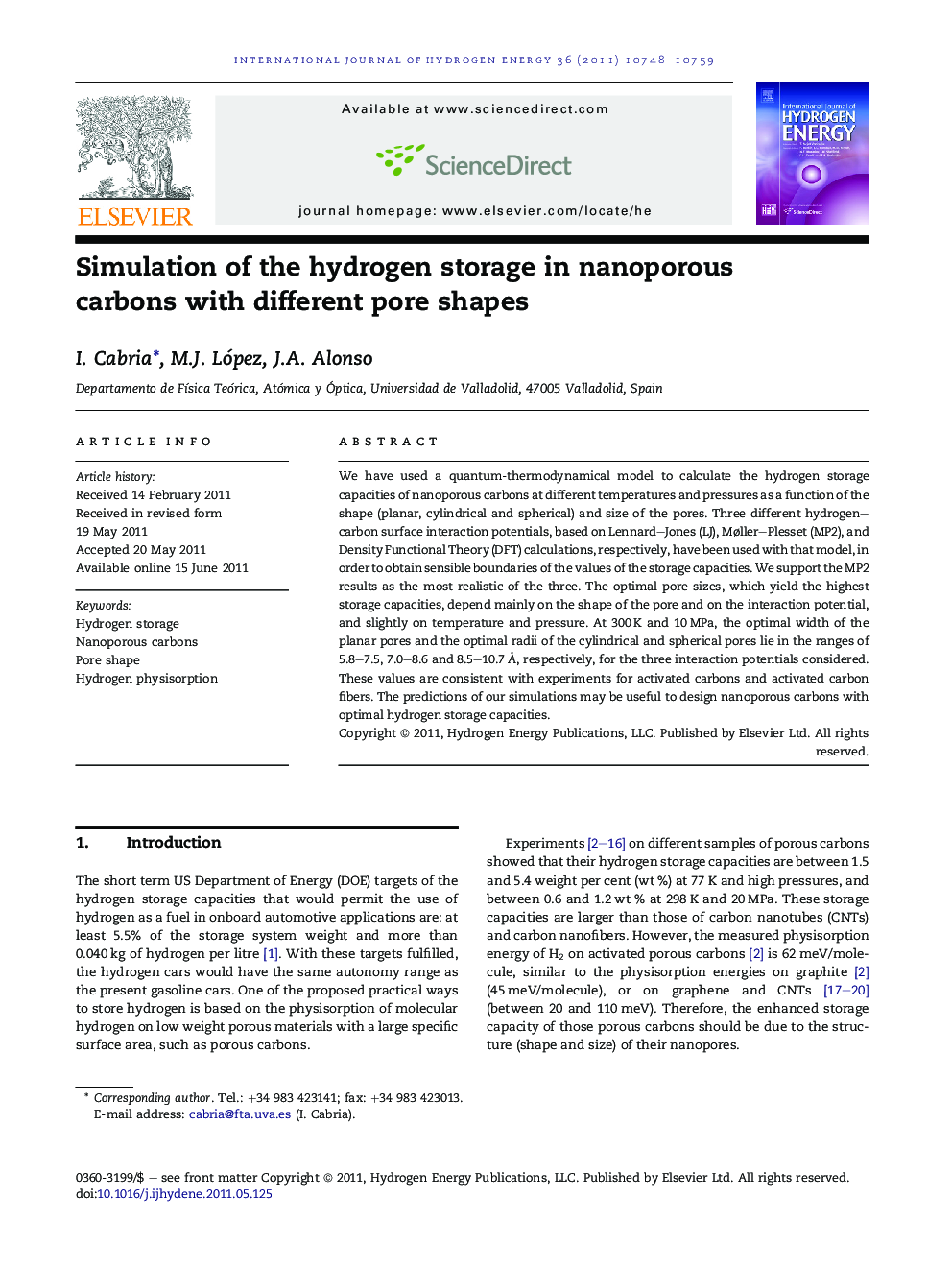| Article ID | Journal | Published Year | Pages | File Type |
|---|---|---|---|---|
| 1277543 | International Journal of Hydrogen Energy | 2011 | 12 Pages |
We have used a quantum-thermodynamical model to calculate the hydrogen storage capacities of nanoporous carbons at different temperatures and pressures as a function of the shape (planar, cylindrical and spherical) and size of the pores. Three different hydrogen–carbon surface interaction potentials, based on Lennard–Jones (LJ), Møller–Plesset (MP2), and Density Functional Theory (DFT) calculations, respectively, have been used with that model, in order to obtain sensible boundaries of the values of the storage capacities. We support the MP2 results as the most realistic of the three. The optimal pore sizes, which yield the highest storage capacities, depend mainly on the shape of the pore and on the interaction potential, and slightly on temperature and pressure. At 300 K and 10 MPa, the optimal width of the planar pores and the optimal radii of the cylindrical and spherical pores lie in the ranges of 5.8–7.5, 7.0–8.6 and 8.5–10.7 Å, respectively, for the three interaction potentials considered. These values are consistent with experiments for activated carbons and activated carbon fibers. The predictions of our simulations may be useful to design nanoporous carbons with optimal hydrogen storage capacities.
► Hydrogen storage capacities of nanoporous carbons as function of pore shape and size. ► We simulate the storage capacities using a quantum-thermodynamical model. ► We predict the optimal pore sizes as a function of the pore shape. ► Calculated optimal pore sizes are consistent with experiments for activated carbons. ► The results can be used to design nanoporous carbons with optimal storage capacities.
